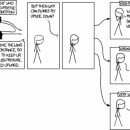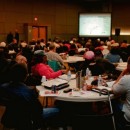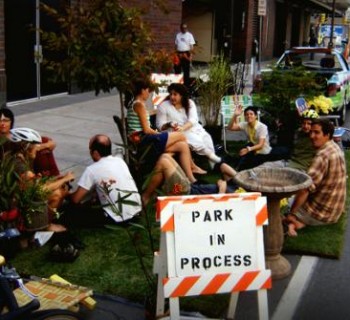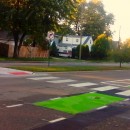Good ol' design.
Perhaps design can be an elusive concept for those who've decided to pursue a career in accounting or maybe it's what you assume Richard Florida's darling and commodified "creatives" do all day.
Design is not a "general occupation," but rather occupies a vast array of concentrations including graphic, product, industrial, transportation, exhibition, interior, advertising, and so much more. Designers are architects and engineers just as much as they are planners and proprietors.
And it's about problem solving, first and foremost. While some associate design with big glasses and MacBook Pros, some think they’re keen on it but are truly oblivious.
This great article from The Worldwatch Institute examines how design not only helps sell products to the masses, but also actually solves problems for cities and people.
In her book Architecture & Design versus Consumerism: How Design Activism Confronts Growth, Author Ann Thorpe investigates the gap between architecture and design's potential for social good and its well-established, stereotypical market application for commercialism and consumerism.
While the last installation of her book we reported on focused on mobilization, we thought this facet of design and architecture was also very relevant.
With that having been said, Thorpe indicates four ways designers can use their skills for the social good and not just making website banners to sell you the latest Ford vehicle or OXO housewares.
1. "Designers can help slow the pace of consumerism by devising goods and spaces that offer alternative societal narratives about ownership and sharing."
"These examples show that conscious design for shared use can make artifacts considerably different than conventional models," Thorpe says.
Detroit Future Schools is a great example of this and lets students take ownership of media production for application and replication in local neighborhoods.
2. "Designers can slow the pace of consumerism by linking sources of novelty and stimulation to slower natural cycles."
"Designers can enhance the quality and availability of the public, or social spaces to offer alternatives to commercial spaces."
Huh? Check out the Lunar-resonant street light, and this will give you an idea of what Thorpe is talking about. Maybe especially applicable to Detroit, which has a hard time keeping its streets lit.
3. "Designers can explore avenues for producing goods that strengthen the commons and lessen our reliance on commercial consumption to gain status or meaning."
Thorpe says it best here: "Consumerism provides a form of social language based on private consumption. Using this language we gain social status, avoid shame, even shape our identities. This consumerism-based language puts profit-seeking entities in charge of some important aspects of societal meaning. The challenge is to define alternative social languages."
The Hub of Detroit. Boom. While not the always associated with design, the Hub, specifically their Back Alley Bikes program is a stellar example of social entrepreneurship and designing healthy social exchange.
4. "Designers can enhance the quality and availability of the public, or social spaces to offer alternatives to commercial spaces."
The Better Block Project took the pop-up project to a whole new level and has transformed entire blocks in cities nationwide into temporary, livable enclaves. Detroit recently had their own version of a Better Block during the recent Detroit Design Festival.
And of course, while you're considering your new career in social design, ask yourself this as well: For whom are we making these spaces and creations?
So, while you thought your son or daughter, colleague or classmate was wasting their time just "looking at pictures of things" on teh Internets, consider they might be doing more than just browsing through the malaise of Mitt Romney memes and cat pictures, but rather getting inspired by creative and open-source solutions for solving city problems.
OK. Ok — you're right — they probably are just looking at pictures of cats.
Read the original article on Worldwatch here.










